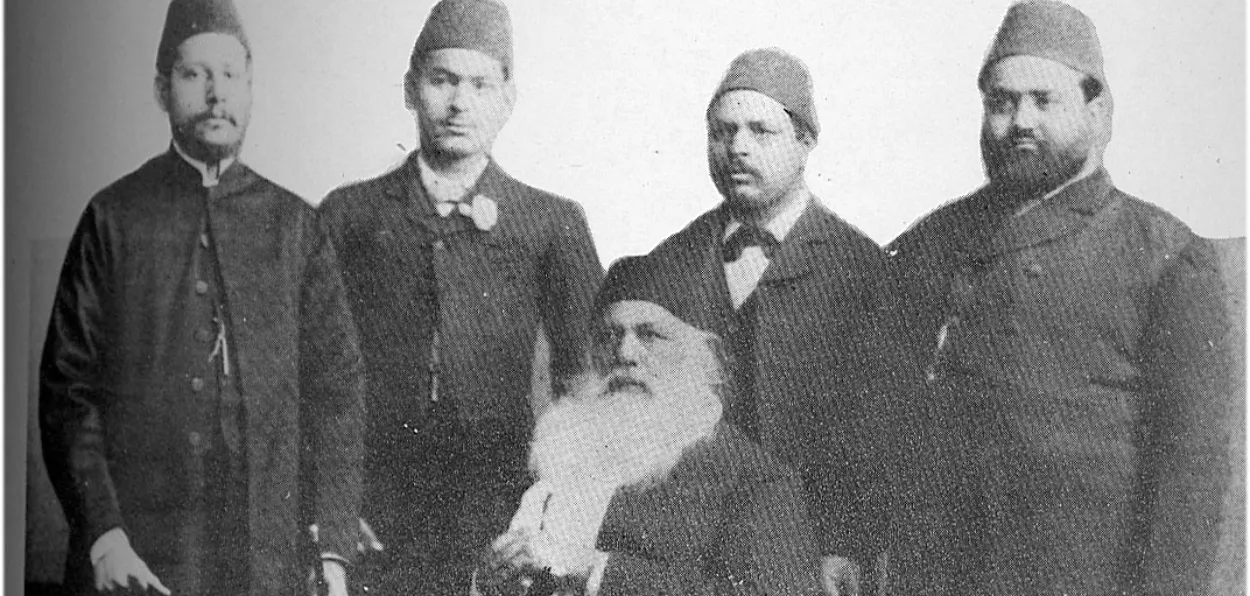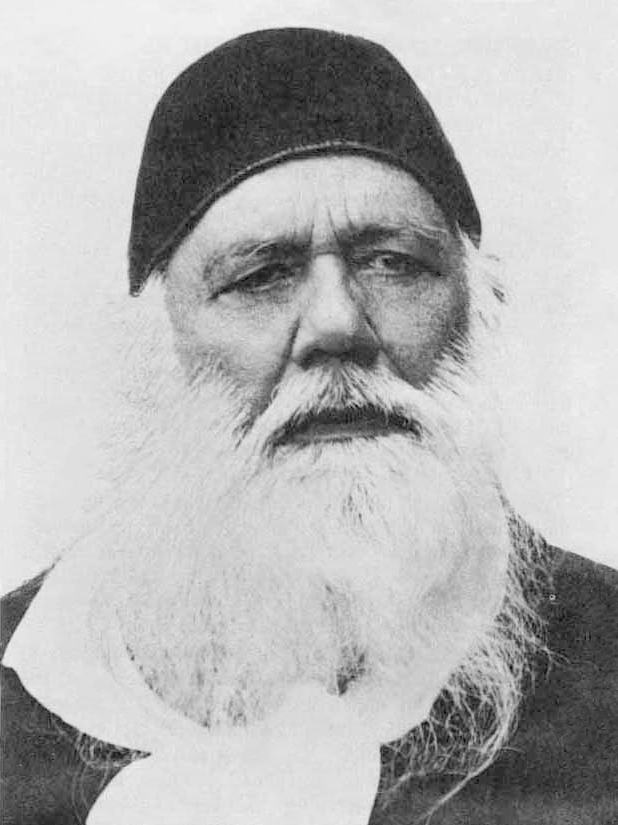
 Saquib Salim
Saquib Salim
Sir Syed Ahmad Khan, the founder of Aligarh Muslim University, remains a controversial figure in history. While a large section of the society credits him for starting a movement for modern education among Indian Muslims, others allege him to be the brain behind the two-nation theory that led to the partition of India, and the formation of Pakistan.
The controversy about him is due to a fallacious translation from Urdu to English. During the late 19th century, most of Sir Syed’s speeches were published by The Pioneer, an English newspaper published from Varanasi. As he generally spoke in Urdu and in the translated version published in the newspaper, it used the word ' nation for ‘quom’.
The correct translation should have been ‘community’. So, what could have been ‘Hindu and Muslim communities’ became ‘Hindu and Muslim nations’ in the translation. Professor Frances W. Pritchett writes, “In virtually every place where the Pioneer's translation says 'nation,' the Urdu word is actually 'quom," or 'community."
Another aspect mostly overlooked in reading Sir Syed is the fact that in the late 19th century, ideas of nation-state, nationalism and citizenship were very different. The World Wars, which would formalise these geographical national boundaries and the citizenship, were still not finalised.
 Prof. Shafey Kidwai, in his book, Sir Syed Ahmad Khan: Reason, Religion and Nation, writes, “Sir Syed’s concept of the nation continues to be a topic that still provides ammunition to his admirers and opponents in almost equal measure. Explaining the theory of Muslim nationalism, Hafiz Malik (1980) refers to Hans Kohn’s definition of nationalism, ‘Nationalism is first and foremost a state of mind, an act of consciousness’, which finds its most explicit expression in Sir Syed’s work. If one looks at his writings, one realises that his concept of a nation (Quom) denotes semantic flexibility in the context of religio-social consciousness. For Sir Syed, it is certainly more than a political slogan or a marker of geographical identity; it is human instinct and not something that one acquires from one's land. In one of his articles, Sir Syed describes it as a fellow feeling that distinguishes man from animals. In his innumerable articles, editorials, lectures, and speeches, Sir Syed uses um as a pivotal but open-ended term that defies rigidity and invariability. For some scholars, the term Qaum in Urdu does not convey a specific meaning as it denoted a nation, country, and religious community simultaneously in the nineteenth century. Sir Syed’s concept still engages the curiosity of scholars and historians studying the role of Sir Syed in shaping the destiny of Indians under British rule.”
Prof. Shafey Kidwai, in his book, Sir Syed Ahmad Khan: Reason, Religion and Nation, writes, “Sir Syed’s concept of the nation continues to be a topic that still provides ammunition to his admirers and opponents in almost equal measure. Explaining the theory of Muslim nationalism, Hafiz Malik (1980) refers to Hans Kohn’s definition of nationalism, ‘Nationalism is first and foremost a state of mind, an act of consciousness’, which finds its most explicit expression in Sir Syed’s work. If one looks at his writings, one realises that his concept of a nation (Quom) denotes semantic flexibility in the context of religio-social consciousness. For Sir Syed, it is certainly more than a political slogan or a marker of geographical identity; it is human instinct and not something that one acquires from one's land. In one of his articles, Sir Syed describes it as a fellow feeling that distinguishes man from animals. In his innumerable articles, editorials, lectures, and speeches, Sir Syed uses um as a pivotal but open-ended term that defies rigidity and invariability. For some scholars, the term Qaum in Urdu does not convey a specific meaning as it denoted a nation, country, and religious community simultaneously in the nineteenth century. Sir Syed’s concept still engages the curiosity of scholars and historians studying the role of Sir Syed in shaping the destiny of Indians under British rule.”
Kidwai further argues that Sir Syed made a distinction between qaum (community) and watan (nation). He was conscious while using the terms. Kidwai writes, “In 1870, Sir Syed launched Tahzibul Akhlaq which, according to Hali, carried the following motto in its first issue — ‘The love for one’s nation is an article of faith, whoever strives to ennoble his nation, also ennobles his religion’..... at that time (1875) Sir Syed believed that Qaum and Watan (nation and country) did not complement each other….. One can find a significant change in Sir Syed’s stance as he replaces the word Watan (country) with Qaum (community). The term Watan is specifically used for the nation or country, but Qaum is flexible and often alludes to a community or religious community.
"Since the journal Tahzibul Akhlaq or Muslim Social Reformer was primarily meant for Muslims, Sir Syed used the term Qaum instead of Watan. The issue of Yakum Rabi Us Sani 1292 Hegira — 14 April 1875 carries the following motto, ‘The love of one’s Qaum is an article of faith, whoever strives to ennoble his Qaum, also ennobles his religion’”
Shan Muhammad, in his authoritative work, Sir Syed Ahmad Khan: A Political Biography, writes, “The Aligarh Institute Gazette translates the word Qaum as Nation, which is obviously an incorrect rendering and is responsible for the misconception that Sir Syed originated the two-nation theory. It is clear from this passage that by the word Qaum, he means community and not Nation in the modern sense.”
Here, the passage in question was, “The first condition for the introduction of a competitive examination is that all people in that country should belong to one nation….”, which was published in The Aligarh Institute Gazette while rejecting the demands of the Indian National Congress. It is quite evident that at this place, community makes more sense.
All these are the arguments by the scholars who were reflecting upon Sir Syed’s life much later. The man in question has himself explained his position. On 27 January 1884, he told an audience in Gurdaspur, “You might have seen and heard in the old history books, and we see it today also, that the word nation is applied to the people who live in the same country. All the people living in Afghanistan are called one nation. The diverse people of Iran are called Irani.
"Europeans hold different religious beliefs and ideas, but they are considered as one nation. In short, from time immemorial, the word nation has been used for the inhabitants of a country, though they may have their separate characteristics. Oh, Hindus and Mussalmans, do you inhabit any country other than India? Do you not both live here on the same land, and are you not buried in this land or cremated on the ghats of this land? You live here and die here. Therefore, remember that Hindu and Mussalmans are words of religious significance; otherwise, Hindus, Mussalmans and Christians who live in this country constitute one nation. When all these groups are called one nation, then they should be one in the service of the country, which is the country of all.”
ALSO READ: Syed Shabir Ahmed Gilani recalls Paharis' struggle for ST status in J&K
Sir Syed had explained his position in 1883 in Lahore when he said, “By the word qaum I mean Hindu and Musalman both, and this is the meaning I attach to the word nation (qaum). To me, it is a matter of the least significance what the religious faith of any people may be, because we see very little of it. But the thing we do see is that we all, whether Hindus or Musalmans, live on the same land and are subject to one ruler. The sources of benefit for all of us are one, and the pangs of famine also we suffer equally.”
